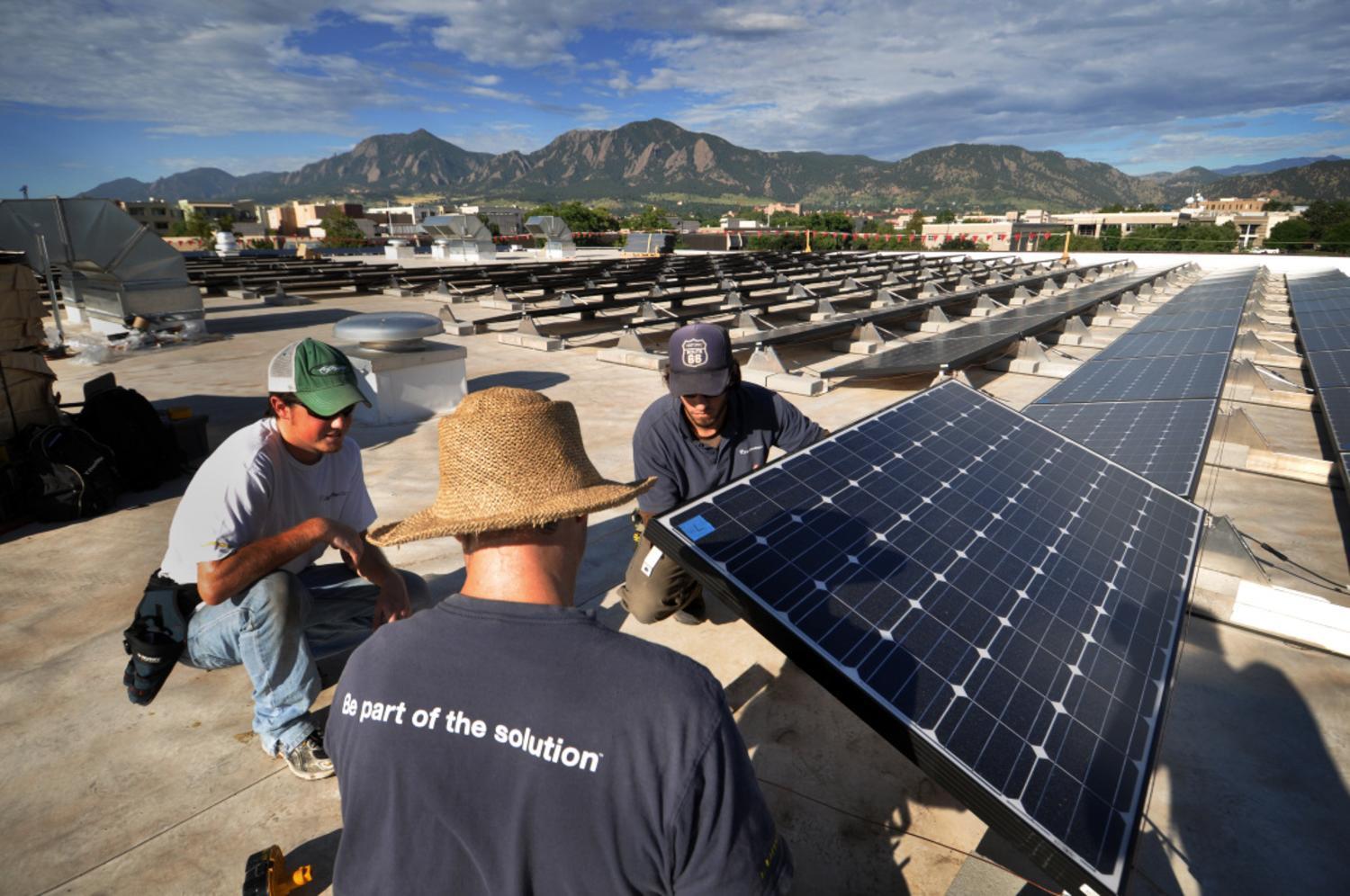
The University of Colorado Boulder has a long history of global leadership in sustainability. From being the first university to establish a recycling program, to being the first university to rank “gold” through the Sustainability Tracking Assessment and Rating System (STARS). Partners on the campus include the Environmental Center, the Office of Campus Sustainability, Facilities Management, Housing & Dining Services, students, faculty, staff and community members.
Campus Sustainability Tour
- Sustainability, Energy and Environment Complex (SEEC): SEEC officially opened in the spring of 2016 and consists of two buildings at the corner of Colorado Avenue and Discovery Drive. One of the buildings provides 289,000 square feet of office and is retrofitted as offices and workspace (including an accelerator mass spectrometer) for SEEC tenants. The second building was built from the ground up and provides state of the art laboratory space. The 145,000 square-foot, LEED-certified lab building was constructed using an open lab design concept to encourage idea exchange and collaboration.
- Wolf Law: This building was one of the first LEED Gold certified buildings on campus. The building, compared with an average building of its size, has seen cost savings of up to $250,000 per year because of energy and water efficient technologies, building systems and controls.
- Center for Community (C4C): The Center for Community is LEED Gold certified. The building includes LED lighting, low-flow bathroom fixtures, evaporative cooling, maximal use of natural lighting, regional materials, materials made of recycled content or rapidly renewable materials, Energy Star rated kitchen equipment, a pulper used to capture food waste for composting. 83 percent of C4C construction waste was recycled.
- Williams Village North: The Will Vill North residence hall - completed in 2011 - is the first LEED Platinum building on campus and one of the first LEED Platinum residence halls of its size in the nation. The building is home to two sustainability oriented residential academic programs for students, and also boasts native landscaping, water re-use, and a solar panel carport.
Did you know that CU Boulder is one of the nation’s leading green schools? Learn more about what makes our campus a leader in sustainability during the Environmental Center's walking tours held every Thursday*, starting at 4 p.m.
Explore a sampling of:
Meet at the Environmental Center, University Memorial Center (UMC) Room 355. Wear comfortable walking shoes, weather appropriate clothing and bring a water bottle!
*Tours do not meet during Fall Break and finals.
Commuting and Getting Around Campus
CU-Boulder is listed as one of the BEST Workplaces for CommutersSM (Colleges and Universities) for our efforts in exploring and supporting environmentally-friendly commuting travel options.
Environmental Health & Safety
The Environmental Health and Safety department at the University of Colorado at Boulder provides comprehensive environmental, health and safety services to minimize health and safety impacts to the campus and the greater Boulder community. EH&S accomplishes this through training, consultation and partnership with members of the campus community as well as with local, state and federal agencies.
Dining Services
A variety of programs are in place to support this initiative in Housing & Dining Services and we continue to expand options each year. Below you can find out What We Do as well as finding out What You Can Do to assist in sustainability efforts.
Facilities Management
The CU Facilities Management Department (FM) works behind the scenes to build and maintain an environmentally sustainable campus. By incorporating sustainable practices in our day to day operations, we have the ability to significantly reduce the negative environmental impact of buildings that we build and operate, and the services that we offer to our campus customers. For example:
- Planning, Design and Construction; ensuring that campus buildings are engineered, constructed and renovated to be as safe, efficient, and sustainable as possible.
- Utility and Energy Services; managing campus energy production, distribution and building efficiency programs.
- Facilities Operations; implementing green cleaning, sustainable grounds keeping, integrated pest management, and building maintenance for all General Fund buildings. This division also manages the new recycling facility, which is operated in partnership with the Environmental Center.
- Distribution Center; managing all campus shipping and receiving, surplus property reuse and recycling, and a variety of other logistics that helps the campus be more efficient.
Ralphie's Green Stampede
The Ralphie’s Green Stampede is a zero-waste and carbon-reduction program at Folsom Field, home of the Colorado Buffaloes Football Team. A collaboration between the Environmental Center and the Department of Intercollegiate Athletics, the program goal is to move toward zero-waste at Folsom Field during the football season and invest in local carbon-reduction projects to match energy used to power the stadium, for team travel and other football-related energy use.
Learn more by visiting www.colorado.edu/sustainability/.
